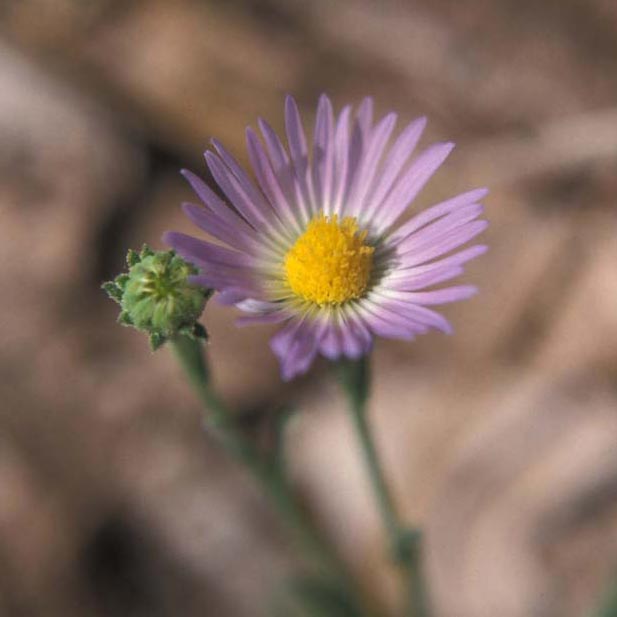Almutaster
|
Family: Asteraceae |
Perennials, 30-120 cm (rhizomes long, slender, roots fleshy). Stems (1-4), ascending to erect, simple, usually glabrous, sometimes sparsely pilose proximally, densely stipitate-glandular distally. Leaves basal and cauline; alternate; basal ± petiolate, cauline sessile; blades 1-nerved, linear- to oblong-spatulate (basal), or linear-lanceolate to linear, margins entire, revolute, faces glabrous or (distal) densely stipitate-glandular. Heads radiate, usually in paniculiform (sometimes appearing corymbiform) arrays, sometimes borne singly. Involucres campanulate, 4.5-8 × 8-14 mm. Phyllaries 22-44 in 3-4 series, 1-nerved (nerve translucent, flat), usually lance-oblong to lanceolate, sometimes ovate, subequal, membranous, margins scarious, (apices darker green, acute, mucronulate) abaxial faces densely short-stipitate-glandular. Receptacles flat to slightly convex, pitted, epaleate. Ray florets 15-30(-45) in 1 series, pistillate, fertile; corollas white to pale purple (coiling at maturity). Disc florets 40-50, bisexual, fertile; corollas yellow, slightly ampliate, tubes shorther than tubular throats, lobes 5, erect, triangular; style-branch appendages lanceolate. Cypselae fusiform-obconic, terete, 7-10-nerved (nerves thin), faces glabrous to sparsely strigose; pappi of 30-40, stramineous, subequal, barbellate, apically attenuate bristles in 1 series. x = 9. The monotypic Almutaster was segregated by Á. Löve and D. Löve without comment. Its distinction was accepted by G. L. Nesom (1994b, 2000), who listed its distinctive character-istics and pointed out its close affinities to Psilactis, as well as putative similarities with Symphyotrichum sect. Oxytripolium (Symphyotrichum subg. Astropolium in current treatment). Nesom (1994b) also rejected the hypothesis of an allopolyploid origin for the taxon, based on cytologic and hybridization data. A phylogenetic analysis of nuclear ribosomal DNA (ITS) sequence data indicates that Almutaster is sister to Psilactis, both forming the sister group to Symphyotrichum. Subgenus Astropolium is well nested within genus Symphyotrichum and its similarities to Almutaster must be intepreted as either retention of symplesiomorphies or convergence due to occupancy of similar saline habitats.
|

